Caught by the River editor Diva Harris’s July dog walks were punctuated by foxgloves, Heart urchins and rare English orchids.
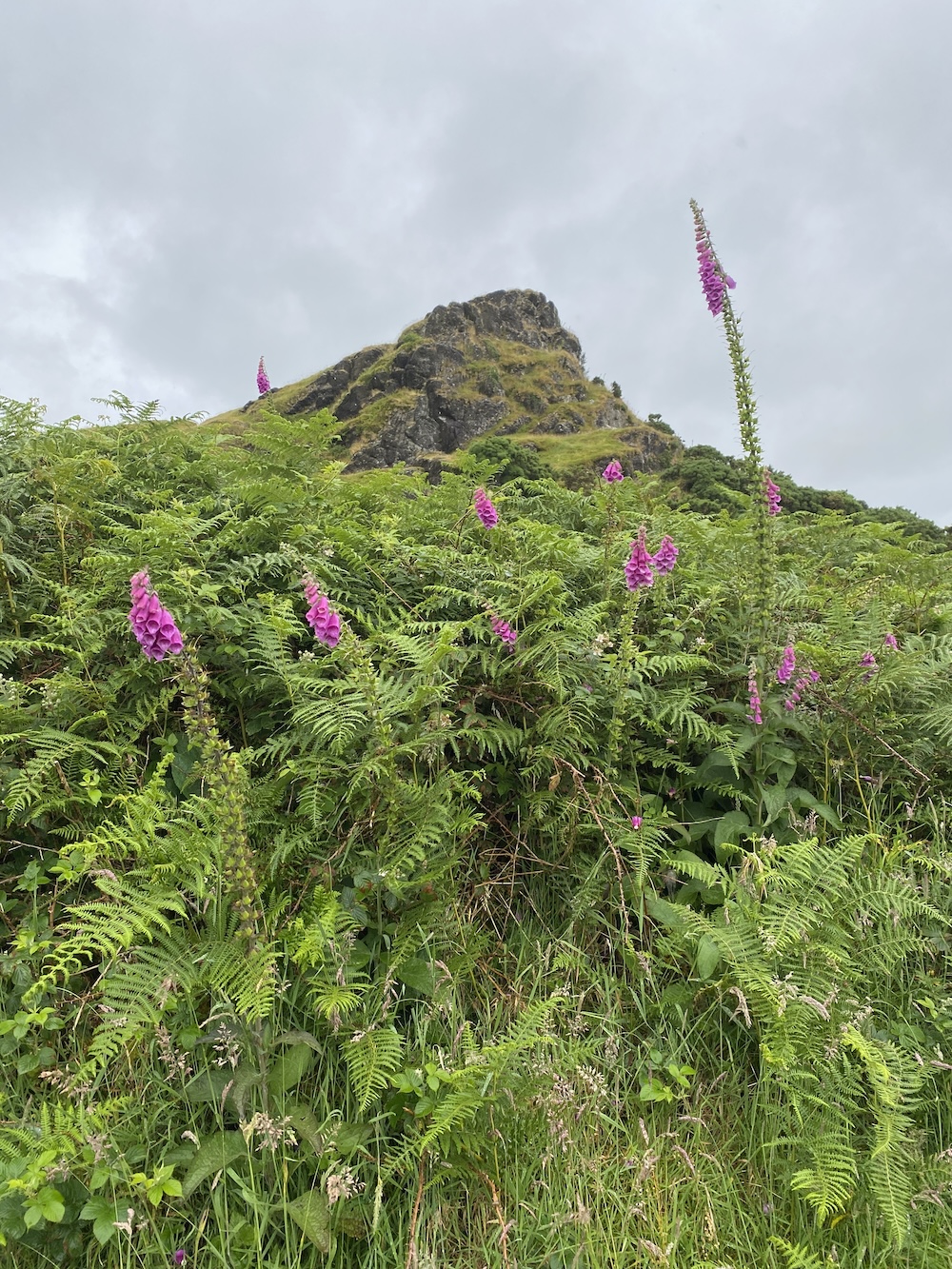
Ground cover/wall cover/hedge cover: Foxglove foxglove foxglove foxglove foxglove; endless processions of foxes wearing purple opera gloves to the elbow. English orchids, honeysuckle, hollyhocks, Turkish-delightful roses. Unripe conkers. Blackberries fragrant and far too soon.
This is my kind of July says B, and I agree. We are wrapped in waterproofs which flap in the wind and rain as we make the steep ascent to a 12th century church on top of a tor, which is in turn on top of some Iron Age earthworks. The tor isn’t actually even a true tor, but an ancient, extinct volcano. The opposite hill, where we usually walk the dog, is under the church’s watchful eye, and it’s a useful way-marker; a friendly landmark in the mist when I overestimate my ability to find the path in the ever-changing moorland weather. According to legend it was raised under similar circumstances, when a merchant, tormented by the Devil with a terrible storm, appealed to St Michael — archangel, Satan-battler, and patron saint of dangerous professions — for help, vowing to build and dedicate a church on the highest point of the land if the ship were saved. The ship was saved, and after a bit more tussling with the Devil (hell-bent on kicking Hugh the Merchant’s building materials down the hill) St Michael de Rupe was founded in 1130.
Wet confetti from a recent wedding celebrates us reaching the top of the tor. There is a sign that warns of swallows nesting and another, on a door deeply carved with initials, that welcomes the dog inside. We take refuge from the storm and it is quiet and dry, save for the occasional drip from the roof or one of our raincoats; the clicking of dog nails on the flagstone. When we are dry enough to be windswept again, we walk out, around and down in a spiral, back to a house with dry socks, concertina-playing and hot mugs of tea. The dog curls into a small wet ball with a contented sigh.
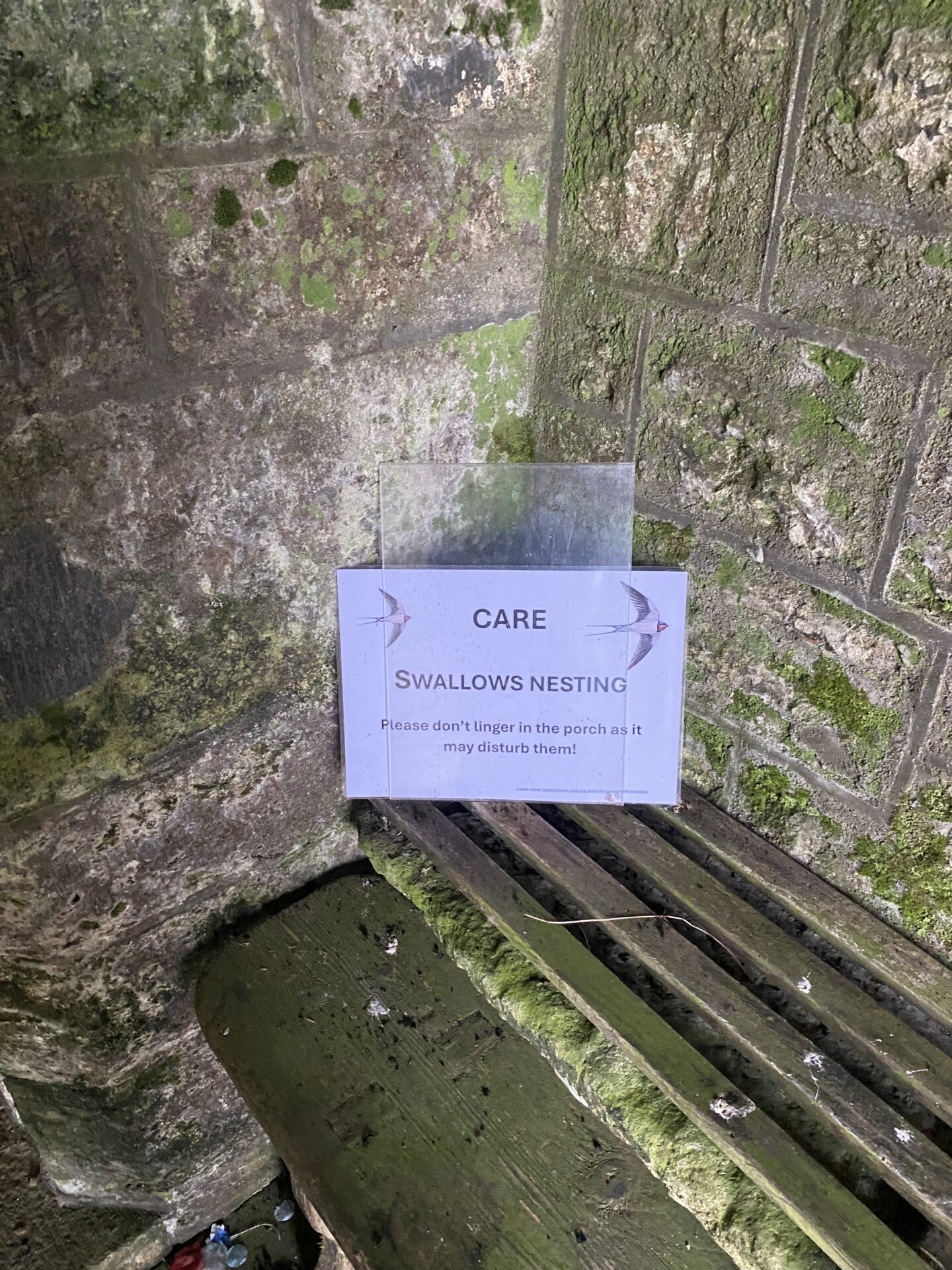
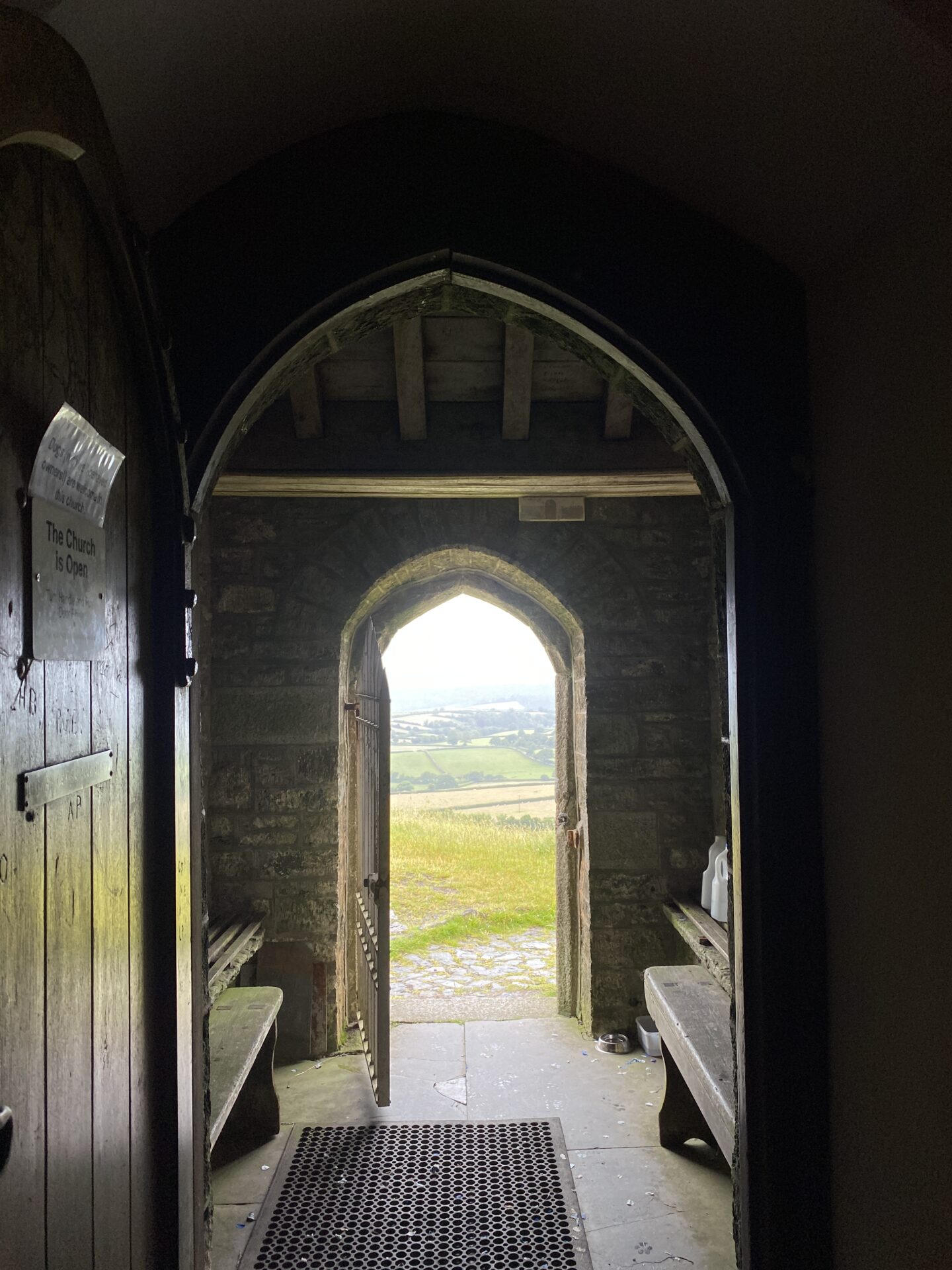
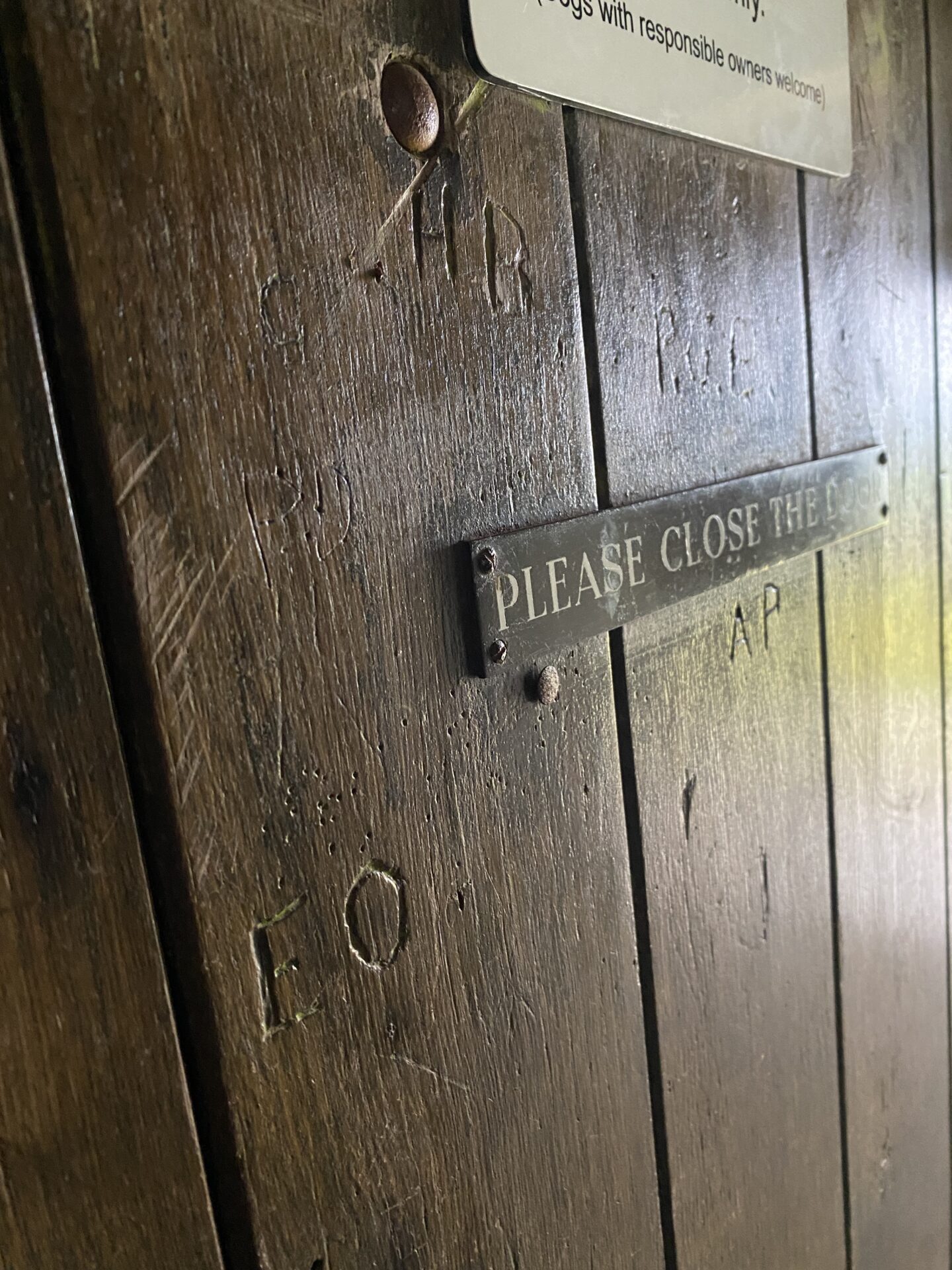
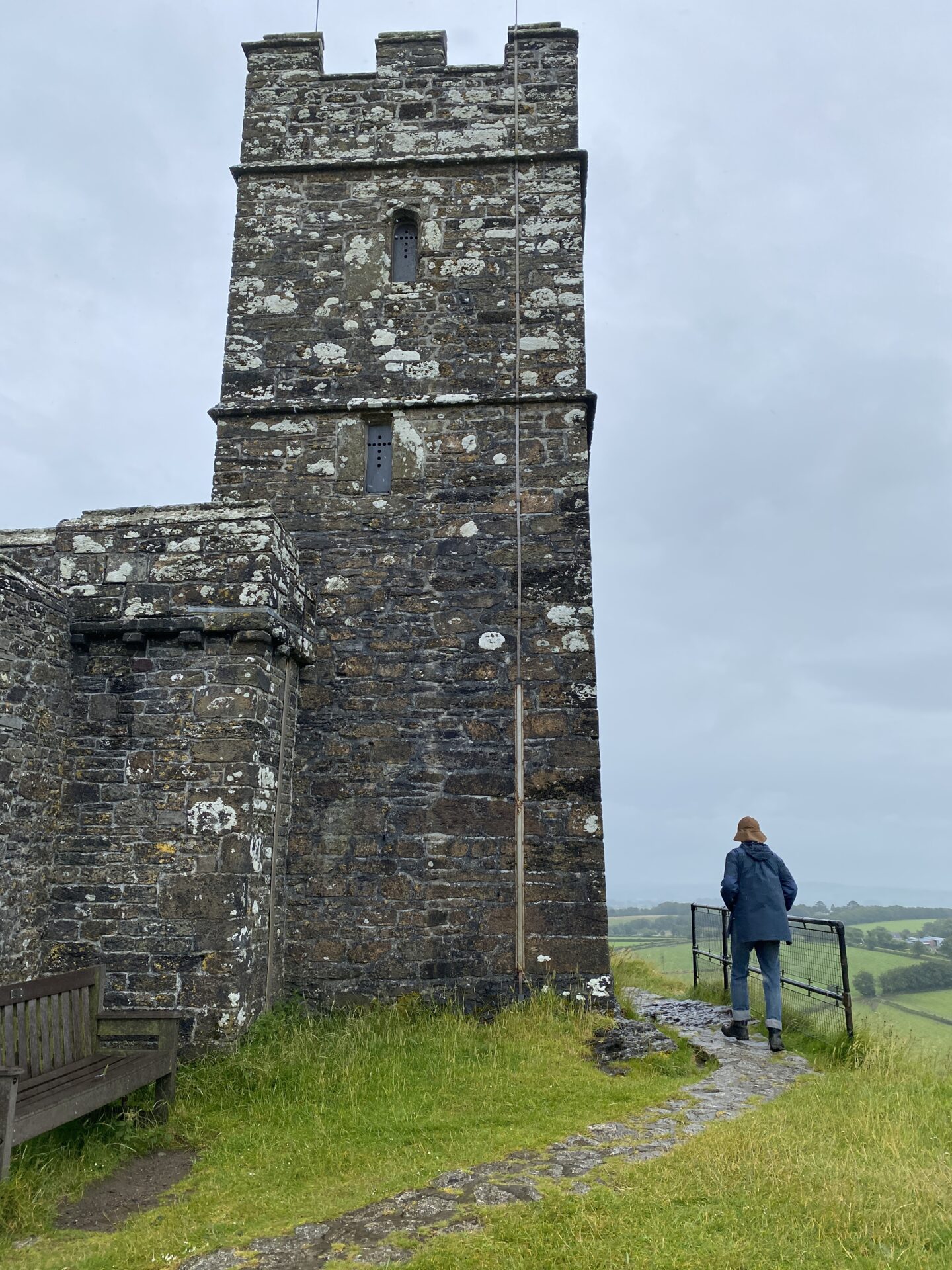
Before we head back up the motorway, we spend a day in the surreal landscape of England’s biggest sand dune system — a Site of Special Scientific Interest that looks more like North Africa than North Devon. Rabbits (and rabbit bones) abound. Rare wild English orchids push up through sand littered with discarded mess packets and empty shell casings; morning-glories corkscrew around signs that warn of the risk of ordnance blowing you up. Collecting brash for the storm kettle, I am stopped in my tracks by the two biggest birds I’ve ever seen, circling slowly over the dunes — perhaps — surely not — a pair of white-tailed eagles. We work up a sweat climbing up then running down the steep dunes, and when we reach the wide, flat beach on the other side, studded with the skeletons of Heart urchins, even our distinctly un-maritime dog goes for a proper swim.
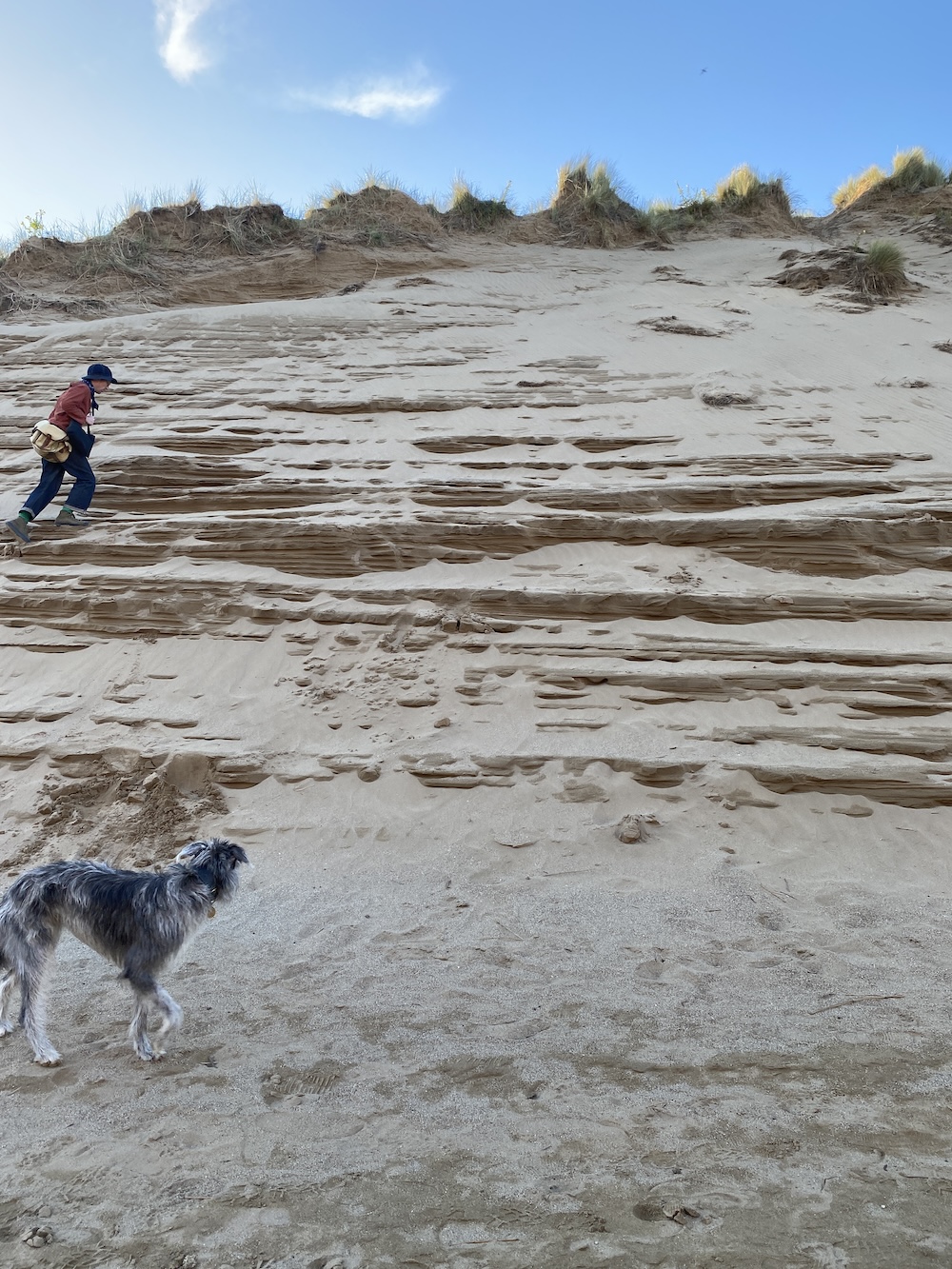
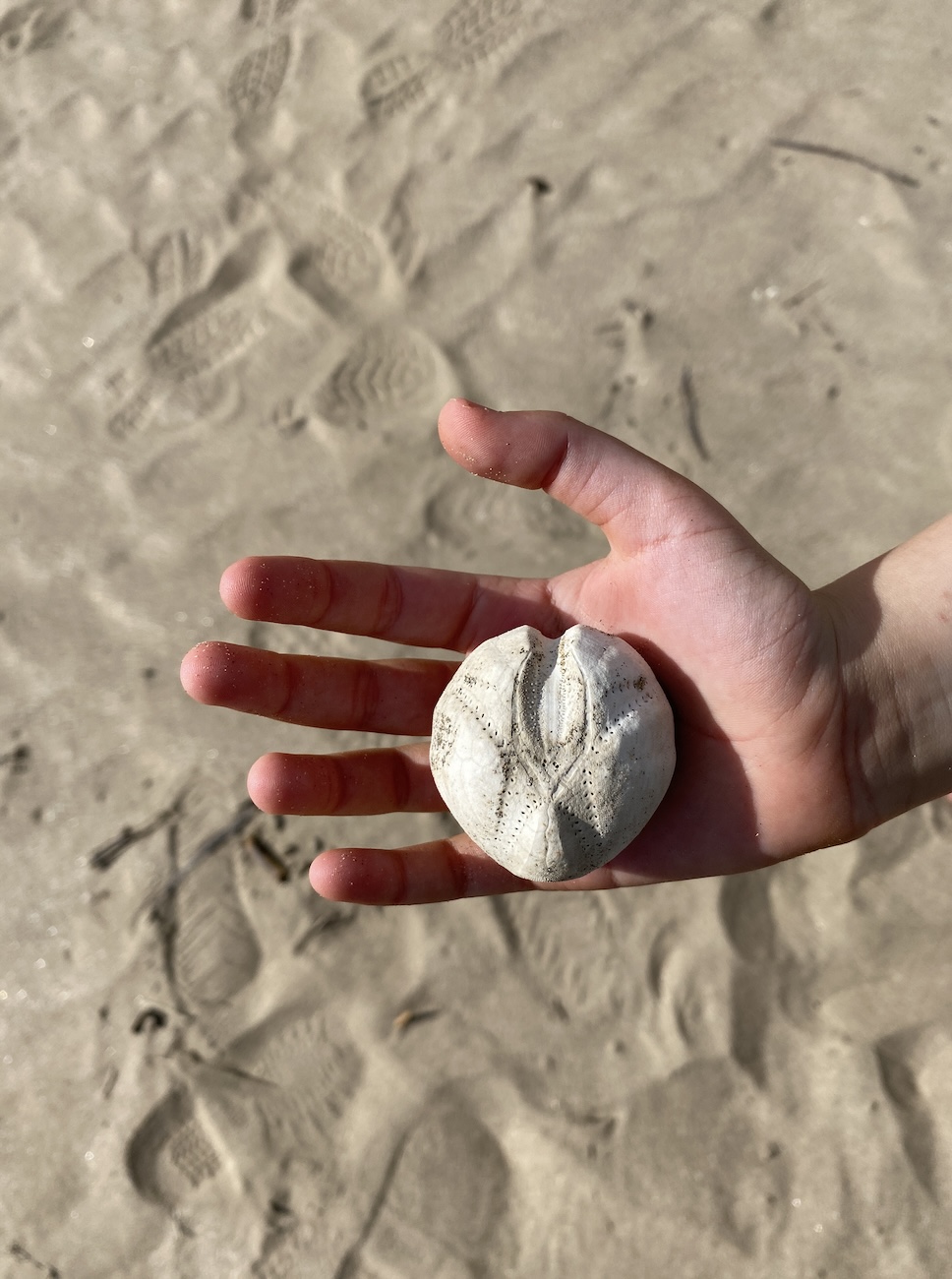
Life calls us back to London. At Sedgemoor services, we feed rooks — straighter-beaked, fluffier-trousered cousins of the crows — with sandwich crumbs and bits of apple. The short dog walks that happen at service stations are always bleak and fascinating to me in equal measure; you can usually find pockets of wildness, hidden corners of woodland, tucked around the back — even if they are usually right by the hot extractor outlets of rubbery burger and chicken chains. When the dog has been for a sniff and a wee, I sit in the open boot with her awhile, watching the cars, people eating hamburgers, the birds. On the map on my phone I see that there is a nearby holiday park called Rookery Manor and wonder how long the rooks have had a stronghold; whether they remember. Our cups of thermos tea make circles of condensation on the dashboard. We are blissfully unaware that we will be stranded at the next services with a fried car, walking the dog round and round the empty car park to pass small hours while we wait for assistance.
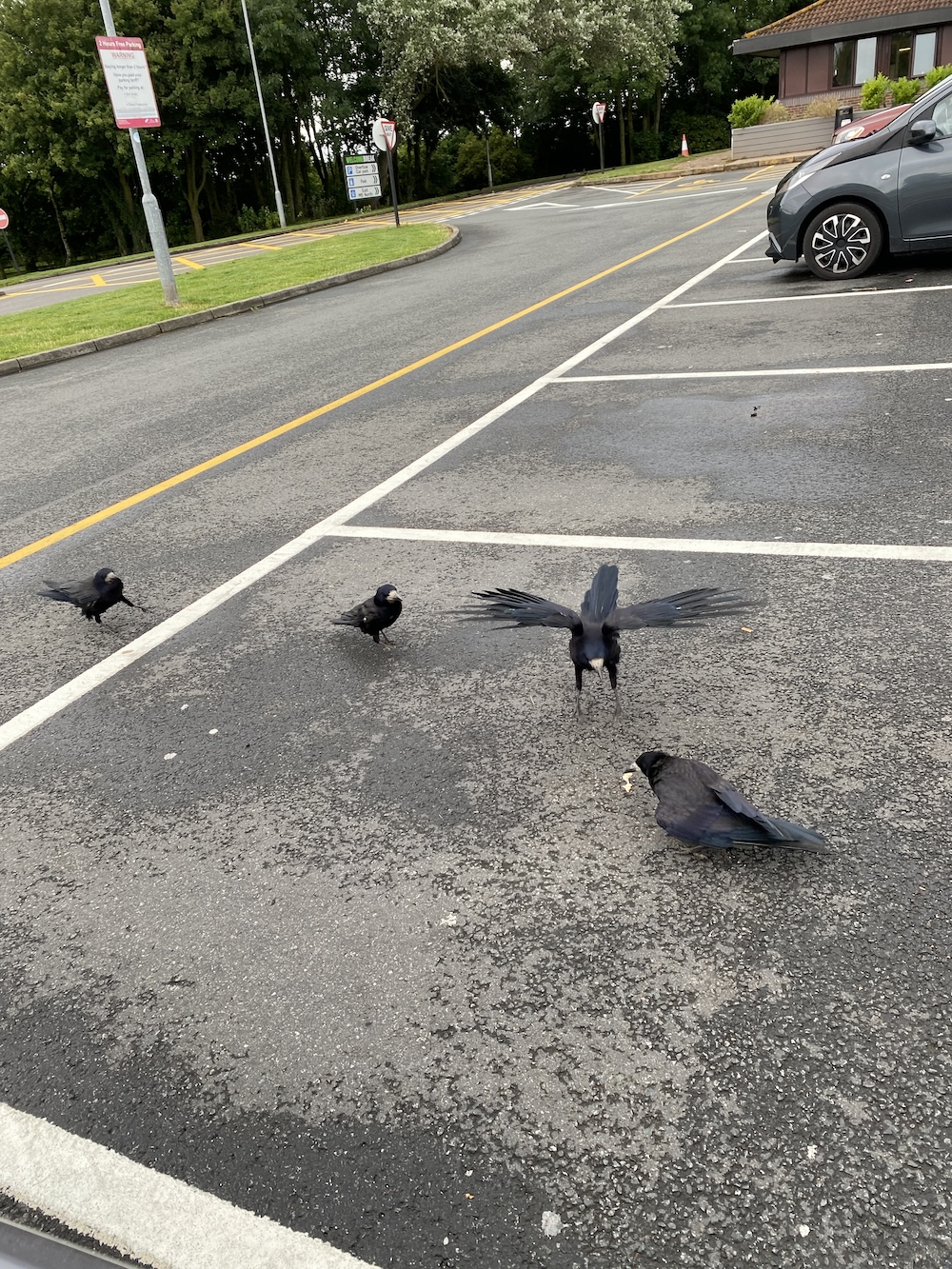
The next morning, minimal sleep between us, B’s dad, who came valiantly to our rescue, remarks on the view of the city from our twice-daily dog walk — as enthused by the novelty of our tall glass buildings and blinking red lights as I am by his gorse and wild ponies. Unhardened by city living, he is chipper, smiling at everyone, bidding them a good morning, making friendly conversation.
The delicious dampness of the South West quickly becomes a distant memory. When the temperature gets up average for July — too hot — my 5 annual freckles come out, and so does the dog’s small patch of mousy pink fur, and so too do the big shiny flying ants, who warm their thoraxes on the concrete’s residual heat. I am thankful for the trees, which shade the paths in lace — and which the council scandalously tried to butcher en masse a few months ago, during bird nesting season no less, to meet the insurance requirements of the private events they increasingly permit in the park.
Although I am deeply suspicious of the motivations behind any changes the council make to the park, I have to admit that the wildflower meadow — just a few weeks ago a triangle of mud, and now lush, colourful and species-rich — seems like a good thing. There has been a noticeable increase in butterflies and other pollinators. In the late July heat, the incongruous inner-city meadow chirrs with crickets. A spiky caterpillar drags lazily across the tarmac of a nearby path, loping from July into August.